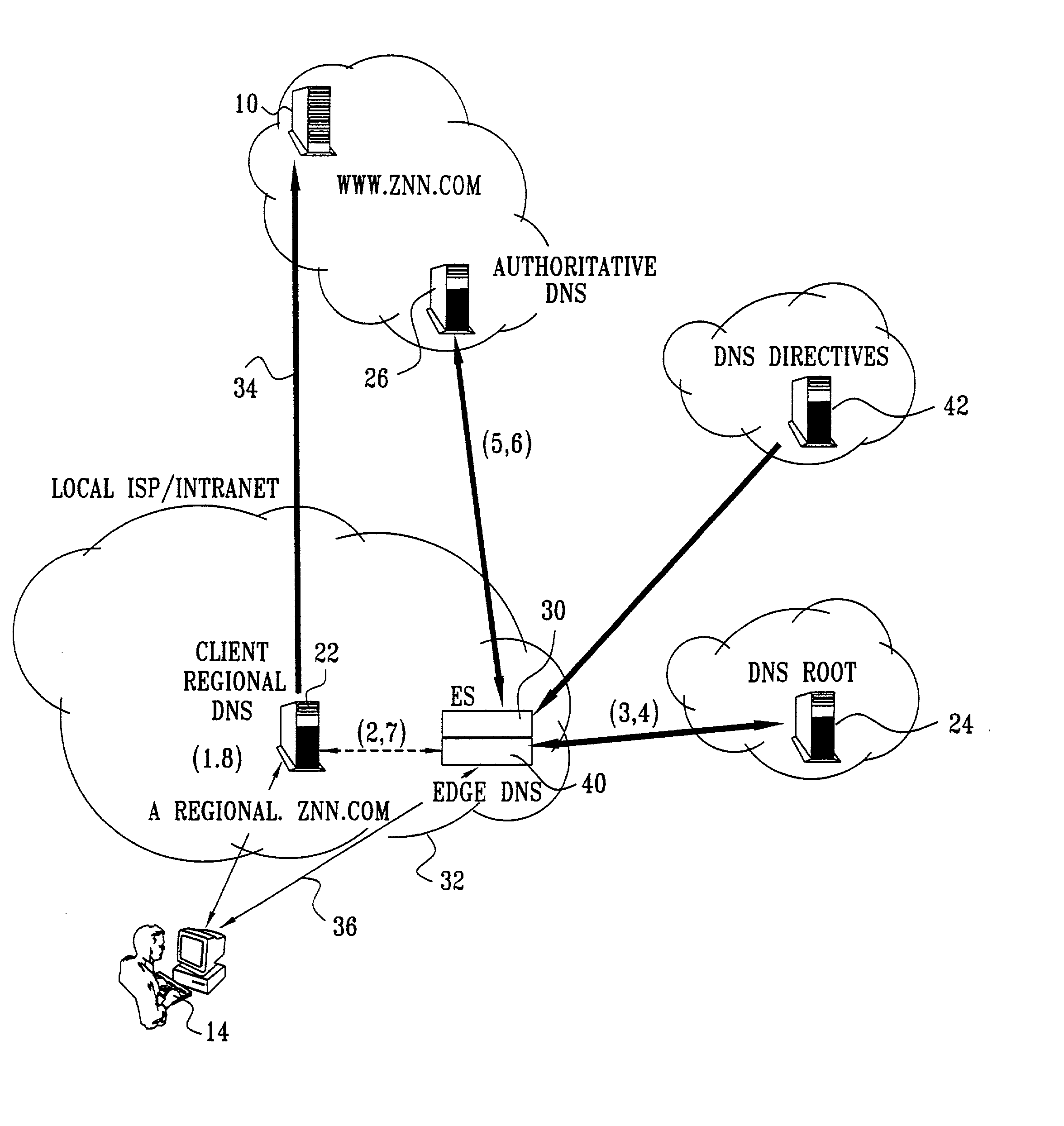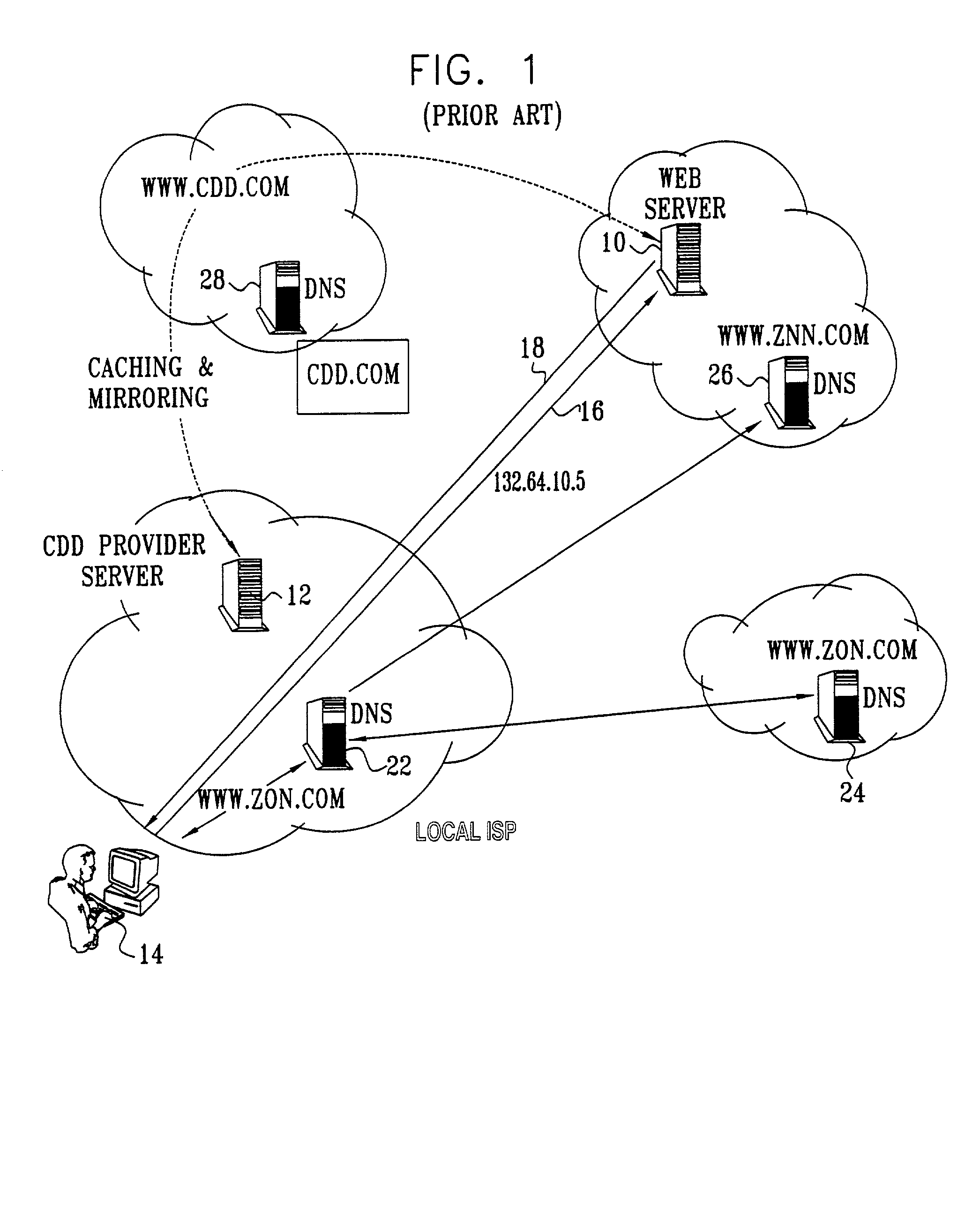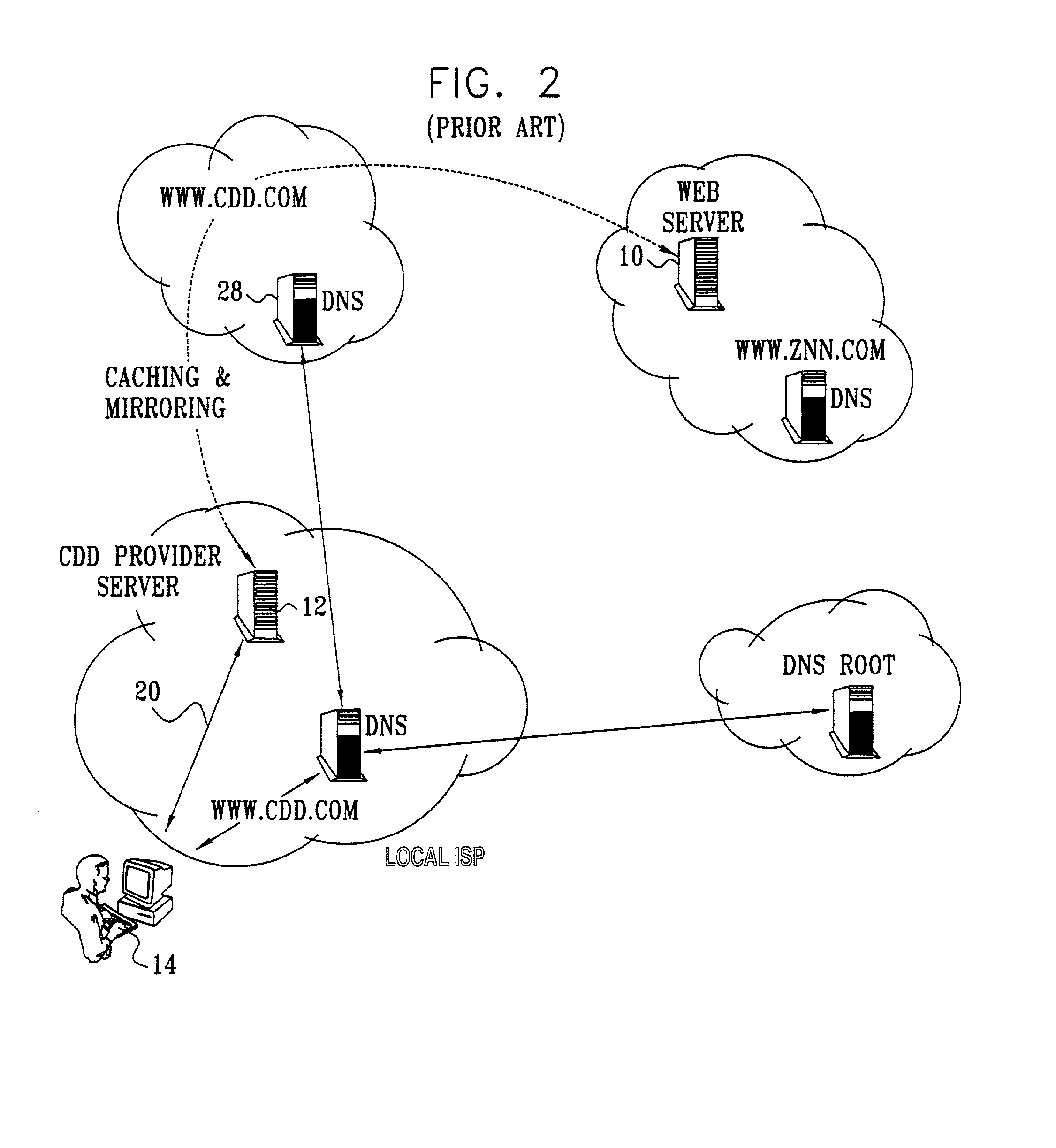Differentiated content and application delivery via internet
a technology of content and application delivery, applied in the field of data transmission over the internet, can solve the problems of imposing difficult scalability problems regarding the configuration of network elements, unable to use the dns redirection method, and only addressing these low level problems
- Summary
- Abstract
- Description
- Claims
- Application Information
AI Technical Summary
Problems solved by technology
Method used
Image
Examples
example
[0436] If the user defined a certain profile on the URL:
[0437] www.cnn.com / news / weather.html, wherein
[0438] edge server groups: (G.sub.1=U.S.A, G.sub.2=Italy).
[0439] Customer groups: (C.sub.1=gold, C.sub.2=bronze).
[0440] Time: (T=every day 22:00-23:30).
[0441] then the directives editor 122 generates a profile according to the logical formula
(G.sub.1+G.sub.2)*(C.sub.1+C.sub.2)*T=G.sub.1*C.sub.1*T+G.sub.1*C.sub.2*T+-G.sub.2*C.sub.1*T+G.sub.2*C.sub.2*T.
[0442] The profile condition records are shown in Table 8.
[0443] The directives editor 122 can generate exceptions by removing a general profile from a specific group, or by changing a general profile of a subgroup. If the user defined an exception for a certain group, then all the subgroups are affected by this exception.
[0444] An exception is a reference to a profile. Thus if the profile has changed then the exception has changed in a corresponding manner.
25TABLE 8 Condition ES Customer Profile ID ID ES group group Time 100123 1 Null U...
PUM
 Login to View More
Login to View More Abstract
Description
Claims
Application Information
 Login to View More
Login to View More - R&D
- Intellectual Property
- Life Sciences
- Materials
- Tech Scout
- Unparalleled Data Quality
- Higher Quality Content
- 60% Fewer Hallucinations
Browse by: Latest US Patents, China's latest patents, Technical Efficacy Thesaurus, Application Domain, Technology Topic, Popular Technical Reports.
© 2025 PatSnap. All rights reserved.Legal|Privacy policy|Modern Slavery Act Transparency Statement|Sitemap|About US| Contact US: help@patsnap.com



